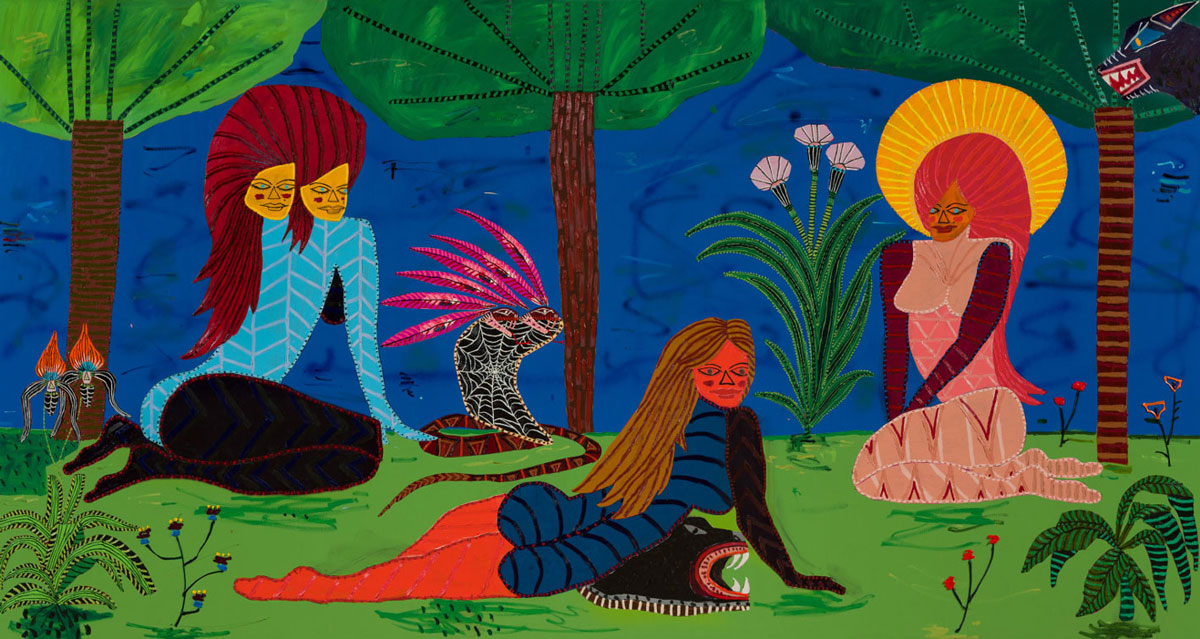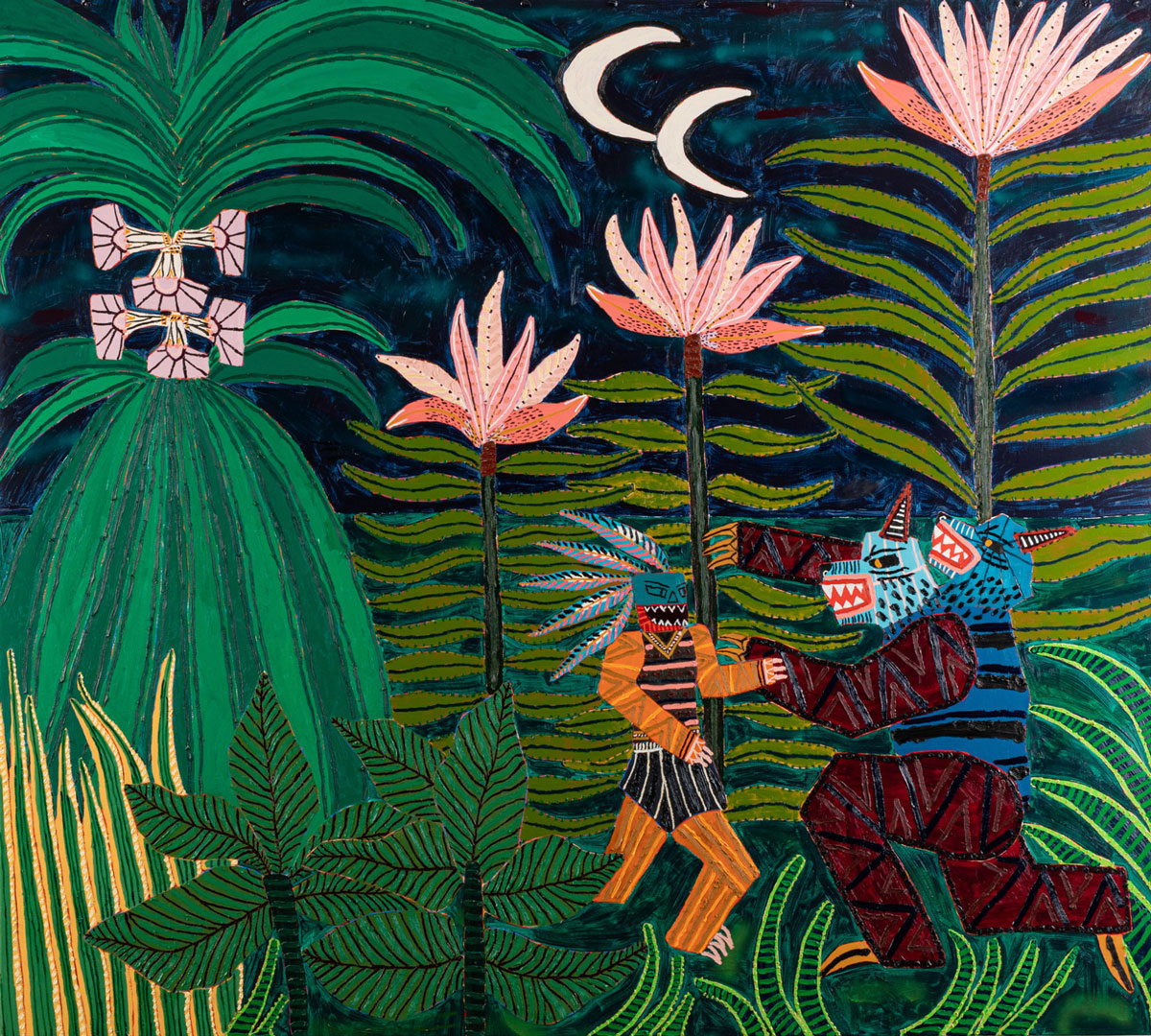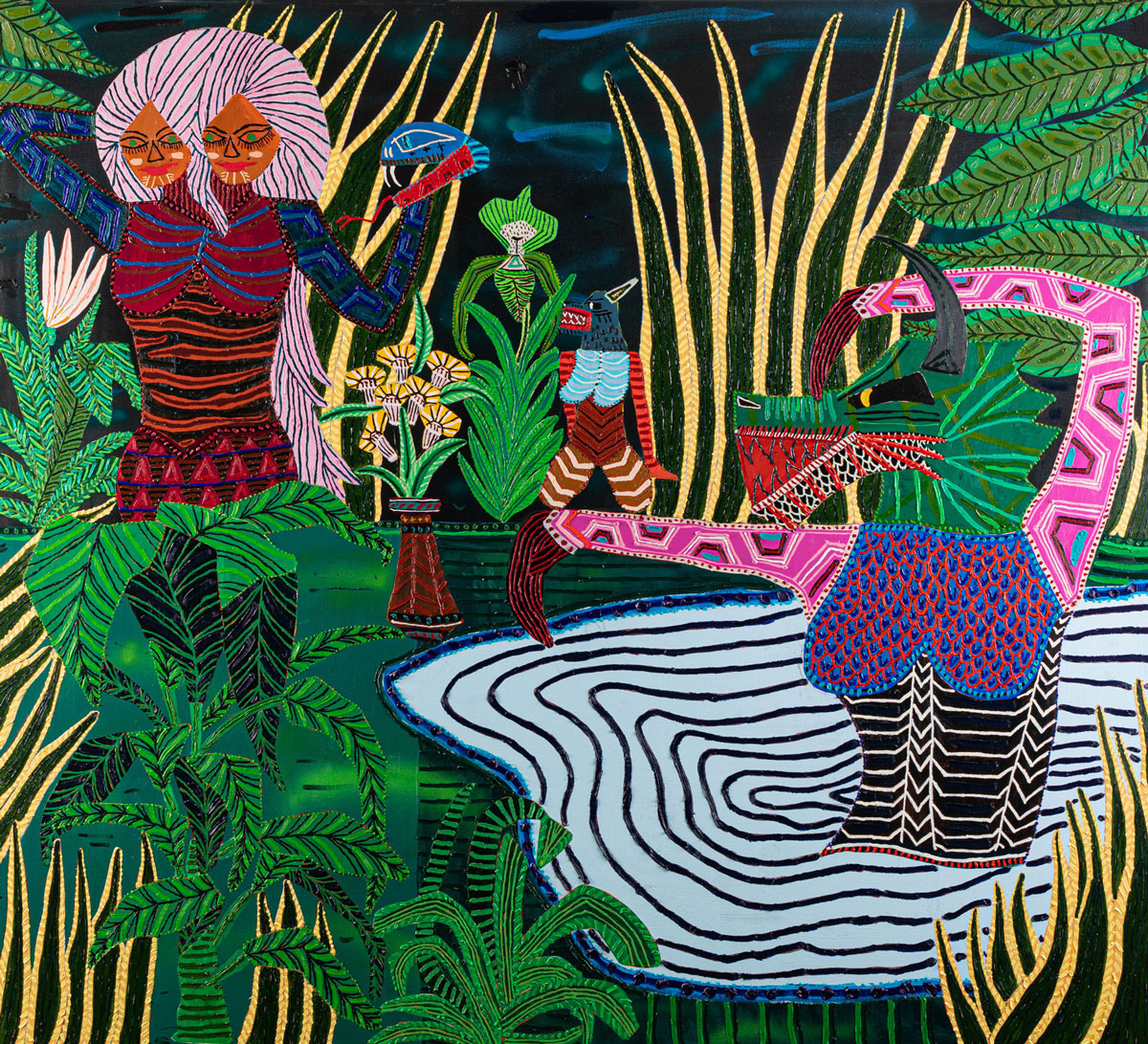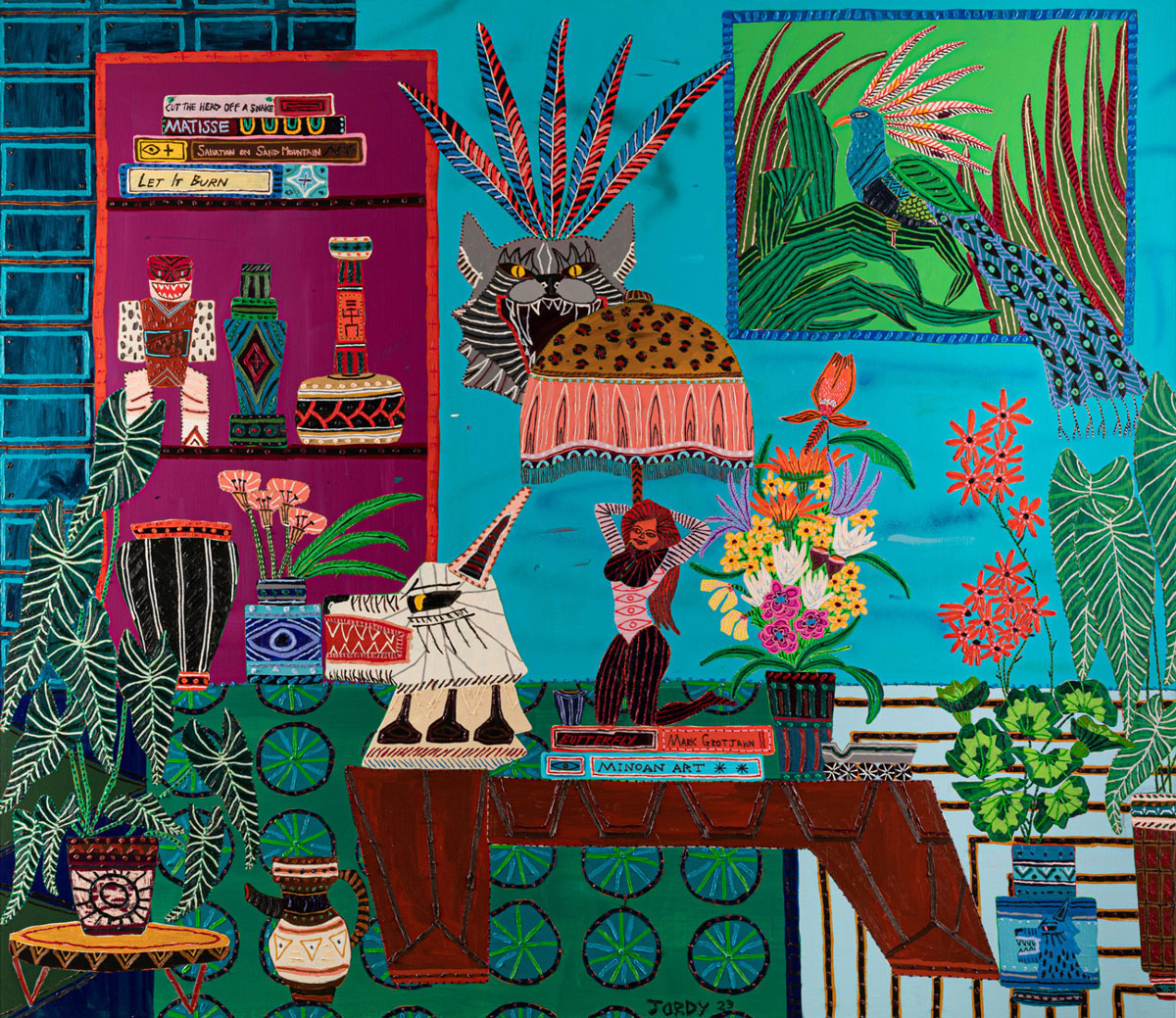PRESENTATION: Jordy Kerwick-So Many Sheep, So Few Wolves
 Jordy Kerwick is a self-taught artist who began his painting career in 2016. Kerwick has quickly acquired global recognition for his bold, raw and unapologetic approach to palette and pattern, executing vivid, expressionistic and highly-stylized compositions. Domestic objects, predatory animals, and mythical beasts populate his figurative canvases and create a contemporary folklore or fable that is playful, kinetic and arcane.
Jordy Kerwick is a self-taught artist who began his painting career in 2016. Kerwick has quickly acquired global recognition for his bold, raw and unapologetic approach to palette and pattern, executing vivid, expressionistic and highly-stylized compositions. Domestic objects, predatory animals, and mythical beasts populate his figurative canvases and create a contemporary folklore or fable that is playful, kinetic and arcane.
By Efi Michalarou
Photo: Vito Schnabel Gallery Archive
For “So Many Sheep, So Few Wolves”, Jordy Kerwick’s first solo presentation in Switzerland, the artist presents new paintings and drawings. Jordy Kerwick’s fantastical visual language unfurls in boldly colored folkloric canvases populated by hybrid creatures, predatory animals, and menacing beasts. The surface of his work, articulated in oil, acrylic and spray paint on canvas, achieves a raw materiality, characterized by the artist’s disregard for academic tenets and traditional rules of perspective. Kerwick boldly flattens forms and creates hard-edged figures that collapse the illusion of depth in order to create the effect of cut-outs floating in pictorial space. In developing his own lexicon of shapes and color, Kerwick has drawn upon the influence of Henri Matisse, whose revolutionary use of large, flat color-forms resonates in the decorative patterning, contours of line, and solid planes of hue that fill the joyful and outlandish canvases on view at Vito Schnabel Gallery. In the new works on view, Kerwick has found inspiration elsewhere in the painting of Henri Rousseau and, more broadly, French modern art history, looking back to the ways in which Breton culture and folklore were mythologized toward the end of the 19th and turn of the 20th centuries. Exploring the exotification and primitivist interpretations of Brittany in the collective artistic mind of past French artists, especially those associated with L’École de Pont-Aven and the avant-garde symbolist group Les Nabis, Kerwick draws specific influences from the innovations of Paul Sérusier and Paul Gauguin. The vast canvas, “After Le Douanier, before the jump” (2023), is ostensibly derivative of Rousseau’s mysterious jungle visions, famed for their lush, leafy flora and surreal strangeness as profoundly radical pictures of their own time. In titling this painting after the French Post-Impressionist’s jocular nickname, a reference to his occupation as a Parisian tax collector, Kerwick here heralds and associates himself with Rousseau’s persona as a self-taught amateur and late-bloomer who took up painting as a hobby and whose work was ridiculed by official critics before such vanguard artists as Picasso and Gaugin hailed his naïve individual style. Enraptured by the exotic grandeur of Rousseau’s greenery, Kerwick has rendered canvases teeming with brilliant vegetation. Oversized lotus blooms, decorative grasses, and verdant trees overwhelm the double crescent, moonlit landscape in After Le Douanier, a painting whose dark, mysterious mood harkens the eccentricity in Rousseau’s “The Dream” (1910). The canvas, like many works in Kerwick’s oeuvre, revolves around recurring iconographic elements and highly identifiable symbols– a striking visual language that deliberately tangles art historical references, ancient iconography, and images inspired by the artist’s domestic life. In other paintings such as “Tarn Jungle” (2023), a double-headed hybrid beast, part wolverine and part tiger with the spotted body of a leopard, crouches in the underbrush in a tropical terrain. A blazing pair of eyes lurks beneath the dark veining of paddle-shaped leaves, while a bewitching bird perches atop of a pale pink orchid-like bloom. In large-scale paintings like “Two Deep” and “Bather & Muse” and “The Greeting” (all 2023), Kerwick draws upon the influences of Breton culture, looking at classical figurative work and the depiction of Breton women that fascinated artists like Sérusier. In his signature hedonistic style, Kerwick incorporates this folk element into the lore of his canvases, reworking the groupings and pairings of figures within the landscape and depicting these peasant women gowned in traditional poses but masked with the head of a king cobra, fanged wolf, or the long haired, femme fatale of his double-headed muse. In addition to intensifying the complexity of composition and mark-making in these monumental works, Kerwick has expanded his customary palette of vibrant primary colors to include tinges of electric, hybrid hues: lime, magenta, melon, and aquamarine entice the viewer’s eye and draw it across the pictorial field. Each canvas in the exhibition is anchored by atmospheric grounds of blocked color denoting sky and grass, punctuated by sprayed graffiti lines of accentuating color. The resulting imaginary landscapes and narratives are brimming with details, characters, and symbols, but it is Kerwick’s exacting bravura brushwork and ornamental patterning that steal the show. Complementing these theatrical scenes of flora and fauna are works that harken to the artist’s earlier focus on humble domestic interiors and floral still life compositions. “This Modern Love” and “Before/After” (both 2023) are expressions of Kerwick’s homebody lifestyle and introversion– glimpses of the solitude and reverie that are in fact the fonts of his burning imagination. Known for his colorful, eclectic still-life paintings, Jordy Kerwick’s latest body of work explores the fantastical elements and storied visions of the artist’s interior imagination where new and unknown terrains collide. Using a variety of materials, from oil, acrylic and spray paint on canvas, to oil stick and collage on paper, the artist’s “the more mistakes, the merrier” approach rejoices in the fortuitous relationships that arise between unexpected combinations of color, texture, and form.
Photo: Jordy Kerwick, 3 Angels Versus 3 Saviors, 2022, Oil, acrylic and spray paint on canvas, 94 1/2 x 177 1/8 inches (240 x 450 cm), © Jordy Kerwick; Photo by Ed Mumford; Courtesy the artist and Vito Schnabel Gallery
Info: Vito Schnabel Gallery, Via Maistra 37, St. Moritz, Switzerland, Duration: 18/7-3/3/2023, Days & Hours: by Appointment only, www.vitoschnabel.com/



